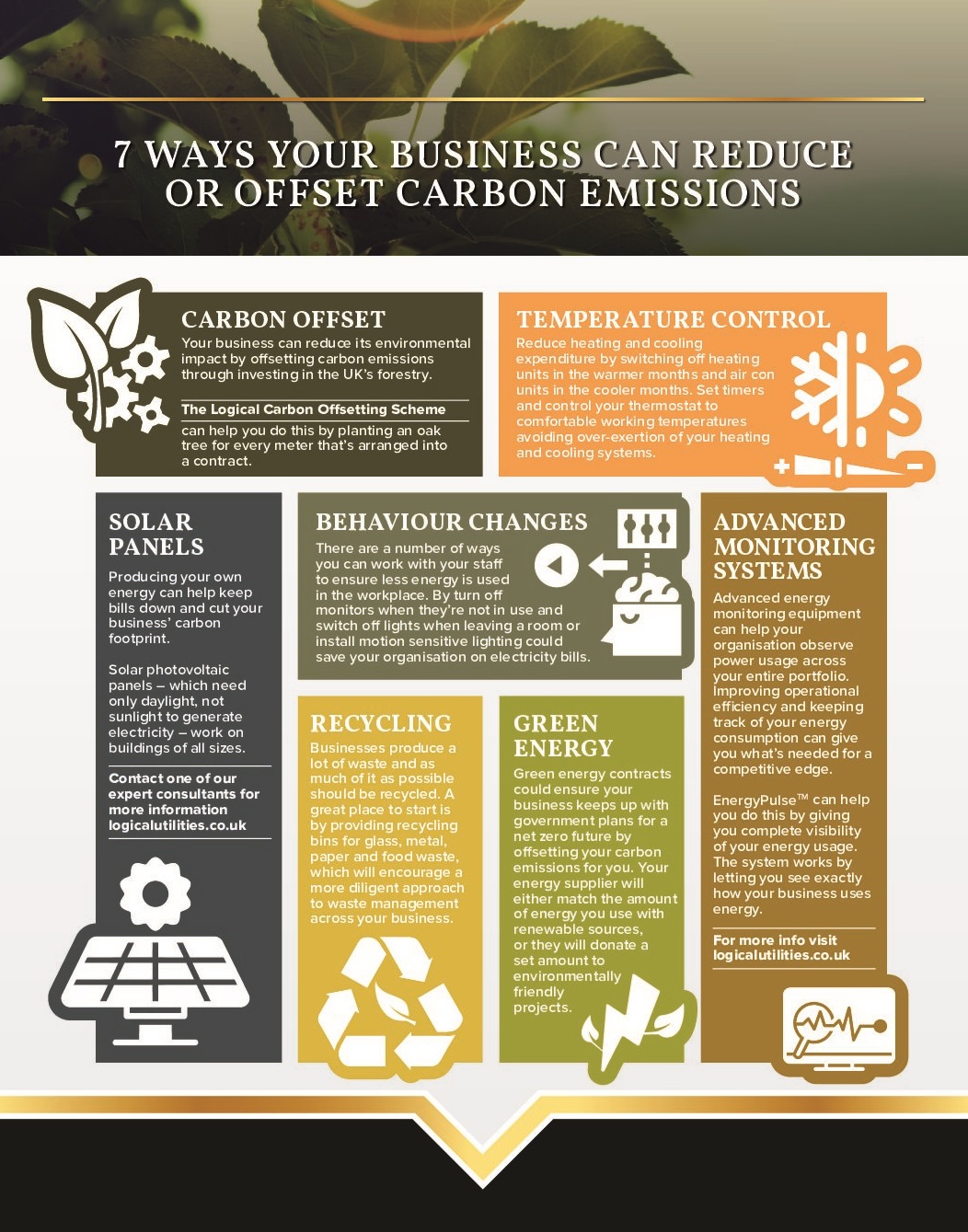As the world becomes more aware of the dangers of climate change, businesses are under pressure to align their policies. Now how can companies reduce their carbon footprint?
There are many ways to do this, from switching to renewable energy sources such as solar and wind power to increasing energy efficiency in their buildings and factories. Some companies have even started offsetting their GHG emissions by investing in projects that help reduce greenhouse gases elsewhere.
Reducing your company’s carbon footprint is not only good for the environment – it can also be good for business. It can help you save money on energy costs, make your operations more efficient, and improve your reputation with customers and investors who are increasingly interested in sustainability.
So how can companies reduce their carbon footprint?
Table of Contents
Switch to Renewable Energy Sources
As our world progresses, so does our technology. And with this modernization comes a more sustainable future – one that runs on renewable energy sources.
You’ve probably heard of solar and wind power, and you may even know a bit about hydroelectricity and geothermal energy.
But what exactly are renewable energy sources, and how can they help reduce a company’s carbon footprint?
Renewable energy is power that comes from natural sources that are constantly replenished. This includes solar, wind, water, geothermal, and biomass energy.
Non-renewable energy, on the other hand, comes from sources that will eventually run out, such as fossil fuels. The main reason to switch to renewable energy is to reduce our reliance on fossil fuels, which release harmful greenhouse gases into the atmosphere.
These gases contribute to climate change, which is a major global problem. Not only is renewable energy better for the environment, but it’s also becoming more and more cost-effective as technology improves.
In fact, some experts believe that renewable energy will eventually be cheaper than fossil fuels.
So, how can companies reduce their carbon footprint by switching to renewable energy? There are a few different ways.
First, they can install solar panels or wind turbines on their property. This will offset the company’s reliance on the power grid, and it will also send a strong message to employees and customers that the company is committed to sustainability.
Another way companies can reduce their carbon footprint is by investing in green bonds or carbon offsets. Green bonds are a type of debt that is used to finance environmental projects, such as renewable energy. Carbon offsets are a way to offset the GHG emissions from a company’s activities by investing in projects that reduce CO2 emissions elsewhere.
Finally, companies can also encourage their employees to live a more sustainable lifestyle. This could include carpooling, taking public transportation, or working from home.
By taking these steps, companies can significantly reduce their carbon footprint and make a positive impact on the environment.
Increase Energy Efficiency
One of the most effective ways how can companies reduce their carbon footprint is to increase energy efficiency.
There are a number of ways companies can do this, from making simple changes to their operations to investing in cutting-edge technology.
Here are a few examples.
1. Make Use of Natural Light
Whenever possible, open up the blinds and let natural light into the office. Not only will this reduce your need for light bulbs but it will also create a more pleasant work environment and reduce energy consumption.
2. Encourage Employees to Use Public Transportation
If your employees live close enough to the office, encourage them to take public transportation instead of driving. This will not only reduce your company’s carbon footprint, but it will also save you money on parking.
3. Invest in Energy-Efficient Technology
When it’s time to upgrade your office equipment, make sure to choose energy-efficient models. This is an initial investment that will save you money in the long run.
4. Educate Employees About Energy Efficiency
Encourage employees to turn off lights and computers when they’re not in use, and to dress appropriately for the weather. For example, wear sweaters in the winter instead of turning up the heat.
Invest in Carbon Offset Projects
Carbon offsets are a way for companies to reduce their carbon footprint and help mitigate climate change. By investing in projects that reduce carbon dioxide emissions, companies can offset their own emissions and help make the world a cleaner place.
There are many different types of carbon offset projects, from tree planting to investing in renewable energy. Offsets can be used to offset carbon emissions from business travel, manufacturing, and even employee commuting.
 (Source)
(Source)
Change Employee Commuting Practices
The United States has some of the world’s worst traffic congestion, and the average commuter spends 42 hours a year stuck in traffic. This has a major impact on our economy and our quality of life.
But there’s another cost to this gridlock that we often don’t think about: the carbon impact on the environment. Commuting is a major source of pollution and greenhouse gas emissions.
In fact, transportation is the second leading source of greenhouse gas emissions in the United States, behind only the power sector. There are a number of ways that companies can reduce the environmental impact of their employees’ commuting habits.
First, companies can encourage employees to use public transportation. This can be done by providing subsidies for public transportation costs or by providing shuttle services to and from public transportation hubs.
Second, companies can encourage employees to carpool or ride share. This can be done by providing subsidies for ride-sharing services or by implementing ride-sharing programs within the company.
Third, companies can encourage employees to telecommute. This can be done by providing the necessary equipment and software for employees to work from home or by offering flexible work hours that allow employees to avoid rush hour traffic.
Implementing even one of these commuting solutions can have a major impact on reducing traffic congestion and CO2 emissions. And, when combined, these solutions can make a real difference in the fight against climate change.
Implement Sustainable Waste Management Policies
In an effort to reduce their carbon footprints and become more sustainable, many companies are implementing policies to better manage their paper waste.
By reducing the amount of waste produced, recycling and reusing materials, and properly disposing of waste, companies can make a big impact on their carbon footprint.
While some companies are still struggling to get on board with sustainable waste management policies, many are already seeing the benefits. Not only is it good for the environment, but it can also save the company money in the long run.
There are a variety of ways that companies can reduce their waste. One way is to simply reduce the amount of waste produced. This can be done by limiting paper usage and eliminating unnecessary packaging.
Another way to reduce waste is to recycle and reuse materials. This includes recycling paper, plastics, metal, and glass. It can also include reusing materials such as construction materials, office furniture, and electronics.
Finally, companies can properly dispose of their waste. This includes using proper waste disposal methods such as incineration and composting.
Sustainable waste management policies are becoming more and more common as companies attempt to reduce their carbon footprint.
FAQs in Relation to How Can Companies Reduce Their Carbon Footprint
How can an organization reduce its carbon footprint?
There are several ways that companies can reduce their carbon footprint, including:
- Improving energy efficiency in their facilities and operations.
- Switching to cleaner energy sources such as solar, wind, or geothermal power.
- Investing in green infrastructure projects such as reforestation or carbon capture and storage.
- Implementing sustainable business practices such as waste reduction and recycling programs.
- Implementing green transportation initiatives.
- Reducing waste and increasing recycling efforts.
- Encouraging employees to adopt eco-friendly practices both at work and at home.
What are 10 ways you can reduce your carbon footprint?
- Advocate for strong climate and energy policies.
- Reduce emissions from company-owned vehicles.
- Educate employees and engage them in sustainability initiatives.
- Conduct a comprehensive carbon footprint analysis and set reduction goals.
- Invest in renewable energy sources such as solar, wind, or geothermal power.
- Increase energy efficiency in company operations through measures such as upgrading HVAC systems and improving insulation.
- Switch to green power sources for electricity needs whenever possible.
- Reduce air travel by utilizing video conferencing and other remote communication tools whenever possible.
- Encourage employees to carpool, use public transportation, or ride bikes when commuting to work whenever possible.
- Install solar panels on company buildings or invest in other on-site renewable energy generation systems.
Conclusion
How can companies reduce their carbon footprint? There are many ways to do this, from switching to renewable energy sources to increasing energy efficiency.
By taking action to reduce their carbon emissions, companies can save money on energy costs, make their operations more efficient, and improve their reputation with customers and investors who are interested in sustainability.





